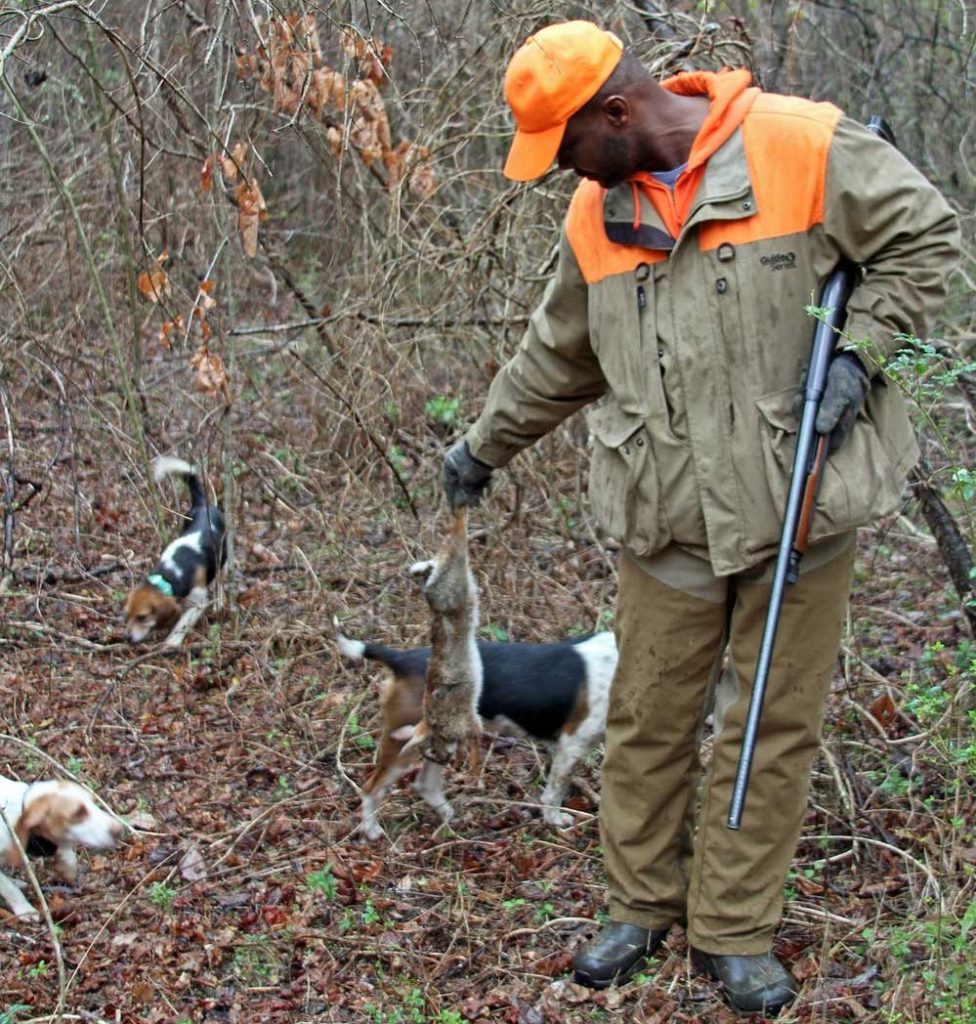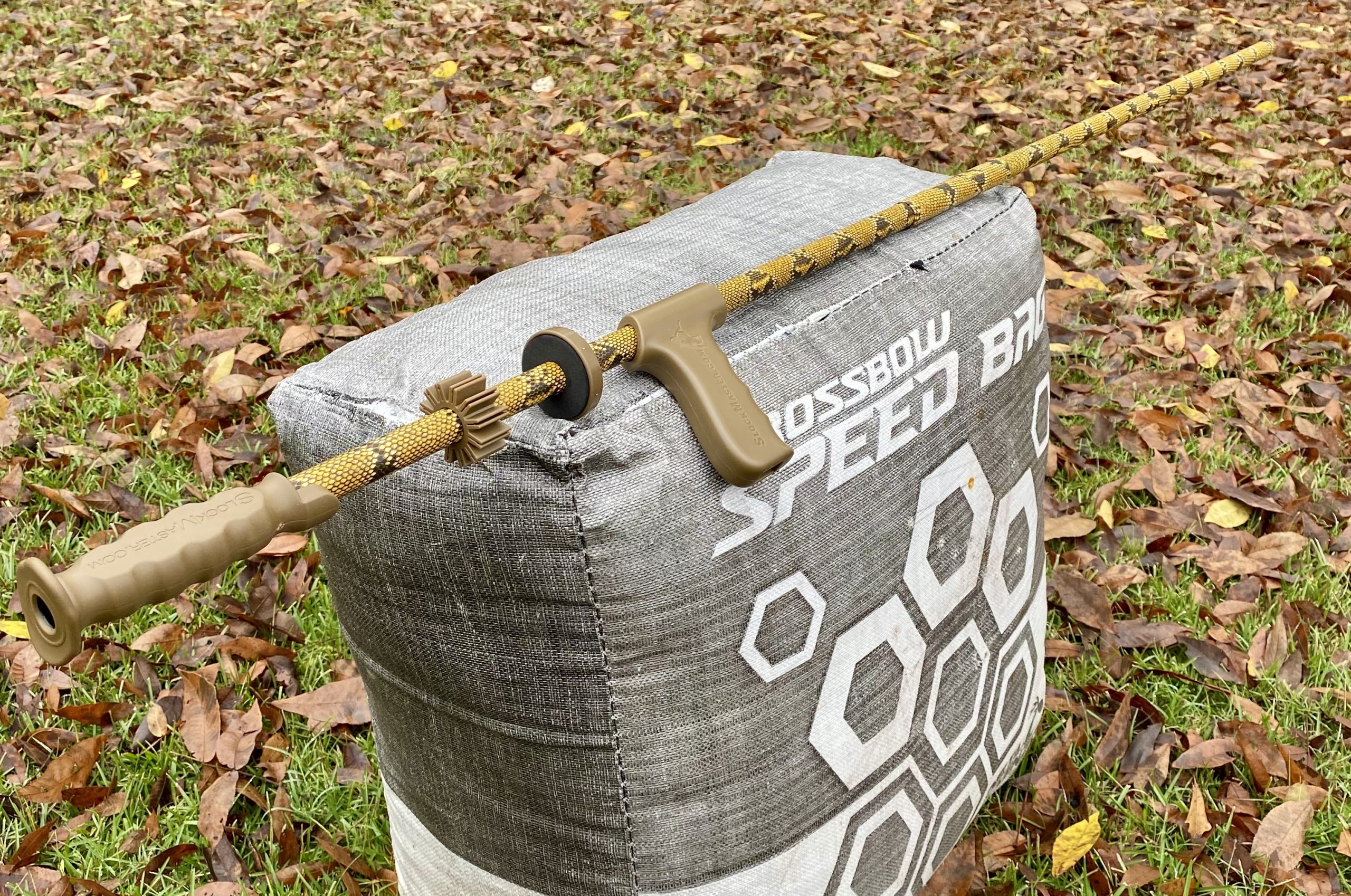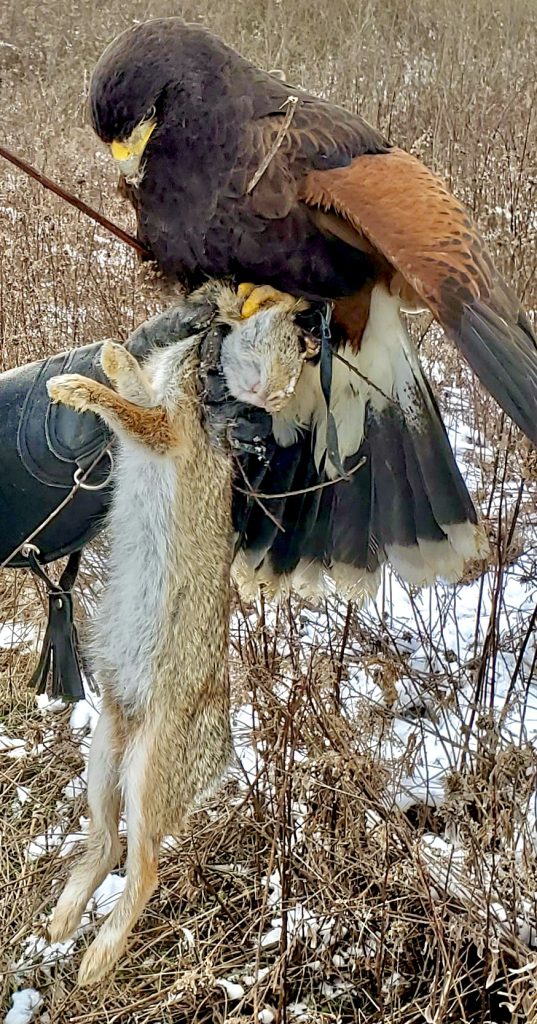Rabbit hunting isn’t just about catching rabbits; it’s also about exploring how animals survive in nature and following old traditions. When the sun sets and the forest gets busy, our hunting instincts kick in. We quietly move through bushes and trails, trying to catch rabbits. In this adventure, we listen to the sounds of leaves and birds, learning the art of hunting. Each step and each shot show our skill and patience. Come with us as we discover the traditional ways of hunting, the fun of hunting with beagles, and the excitement of chasing rabbits in the Alabama countryside.
Rabbit Feeding Habits
Rabbits are near the top of almost every wild predator’s menu, which is most likely why they have adapted a method of eating quickly and disappearing into thick cover. After their hasty meal of grass, weeds, bark, or twigs, they retreat to a more isolated location where they expel undigested matter in the form of sticky greenish-brown pellets called cecotropes.
Reingestion is a polite way of saying rabbits eat their own poop. After this second excursion through the intestines, those well-known brown fecal pellets get deposited on the tops of stumps or any location that enables them to watch, smell, and listen for approaching varmints.
To facilitate these quick meals, they have two large incisors on top, two on the bottom, and two tiny ones behind the upper incisors, called peg teeth. The incisors efficiently slice through vegetation in a scissoring action when the upper teeth slide behind the lower incisors.
Cottontails are the most abundant rabbit species in our state and have three to seven litters a year based on available food and habitat. They begin breeding at about three months, with gestation averaging 30 days. The litter size varies, but the typical brood numbers five, of which only one to two survive their first year, and though they can live on small parcels, their numbers adjust to match their habitats.
The cottontail’s reputation as a prolific breeder became mainstream gossip in the year 1202 when Leonardo Fibonacci published a book that introduced Europe to the decimal system and included a math problem that asked, “How many offspring can a mating pair of cottontails produce at the end of one year.” The equation derived from this exercise became known as the Fibonacci Sequence. His calculations asserted that 144 was the correct answer, and the same problem is still presented in many math texts today.

Rabbit Survival Tactics
Long rotating ears, keen smell, excellent vision, and their ability to instantly accelerate help their survival rate; however, the average age of a rabbit in the wild is less than one year, even though their potential lifespan is 8-10 years.
Their ability to take quick bites also helps reduce their exposure to the many predators that target them when they feed in more open areas.
How To Hunt Rabbits
Slipping along the edge of thick brush, a briar patch, or a greenfield during the first and last hour of the day is a great way to locate feeding rabbits. Taking about ten steps, followed by several minutes of observation, is a great tactic as long as the wind is in your favor. An accurate .22 rimfire or air rifle is great for those still shots, and for those jump shots, an improved cylinder 12 or 20-gauge loaded with size 7 1/2 shot works fine.
On cold, cloudy days, cottontails hold up in thick cover, so a good pair of chaps or briar-proof coveralls come in handy for zig-zagging through the thick stuff.
Cane cutters, or swamp rabbits, stay around backwaters and can be found in piles of brush, cane thickets, or fallen tops. When the waters rise, they often sit tight on small dry areas, and I’ve even seen them resting on a floating log jam.
Hunting Rabbits With Dogs
A few decades ago, it was common to hear tales about rabbit hunting with dogs at many family gatherings. There were more small farms back then with overgrown fence rows and small fields that were the ideal habitat for both quail and rabbits. Many rural residents kept a few beagles in their dog pens in anticipation of the first cold snap, and the sound of a tailgate lowering near a briar thicket was common.
Rabbit hunting is still the third most popular sport in many states. However, the decline of suitable habitats and fewer places to run dogs has resulted in fewer opportunities to listen to a pack of miniature hounds as they squeal and yelp through the thickets and fields in hot pursuit of their long-eared nemesis.
Rabbits hide in brush piles, thick stands of bushes, fallen trees, overgrown fencerows, or cane thickets, and they love briar patches. Often, a dog or hunting partner is necessary to flush those cottontails out in the open, but throwing rocks or sticks amongst the briars can often achieve the same results.
If you jump a cottontail, it will generally zig-zag as it scampers away and runs in a wide circle, but if you stay close to where it flushed and wait for the rabbit to come back, you will likely get another shot. So watch closely for its return, as it may circle behind you.
However, a swamp rabbit will often run in a straight line for quite a distance before they sneak back home. So, if you miss and don’t have a dog to bring it back around, keep hunting. They will run faster and farther than cottontails and often hop into view while the dogs are still distant.
Once you’ve mastered shotgunning rabbits and feel you need a greater challenge, blowguns, slingshots, and hawks are also legal means to gather the main ingredients for rabbit stew in Alabama.

Rabbit Hunting With Beagles
I spoke with Mackie and Paul Deason to better understand what chasing rabbits with beagles entails. Paul explained that he is the third generation in his family to raise and train rabbit dogs. When I asked him what breed of dog he used, he said he preferred large beagles because that’s what his Grandfather used.
Paul explained that the AKC has two established beagle standards that define small as measuring under 13 inches at the shoulder and large beagles as measuring between 13 and 15 inches.
Paul’s father, Mackie, trained and hunted beagles for many decades before passing the torch to his son. Paul spoke about having fewer areas to hunt with dogs in our state but said a few dedicated beagle clubs still carry on the tradition.
Paul also keeps his dogs in prime condition through AKC Beagle Trials held throughout the Southeast. He explained that each dog is judged on their ability to search, pursue and take control during a chase, accuracy in trailing, endurance, adaptability to changing scent conditions, patience, and determination. His dogs recently placed first in four successive competitions.
Rabbit Hunting With Hawks
Anthony Cross lives in Northwest Alabama and uses a Harris’s hawk to hunt cottontails. In addition, he uses a Black Creek beagle that tracks slowly and stays close. Cross said his hawk and dogs team up to harvest a few dozen rabbits each season in Colbert county and the hills of Kentucky. Cross echoed a common sentiment about swamp rabbits, “They take off like a deer and lead the dogs out of hearing quickly.”

Rabbit Species In Alabama
Alabama’s extended rabbit season begins September 10 and runs to March 5, with a limit of eight a day and eight in possession, and there are four huntable species found within our state.
Swamp (Canecutter) – These are about twice the size of the cottontail and are Alabama’s largest rabbit at around five pounds. They’re generally darker than cottontails and have cinnamon-colored hair encircling each eye.
They are strong swimmers and often forage in water three to four feet deep for aquatic plants and grasses. Thick cover near marshes and swamps is their typical habitat, and they inhabit all but the extreme southern portions of our state.
Eastern Cottontail – These are common throughout the state and the eastern US up to Canada, and their name comes from their fluffy white tail that raises if alarmed.
They have reddish-brown fur and usually weigh between two and four pounds. In addition, their front legs and feet are much shorter than their hind legs, and they have disproportionately long ears.
Appalachian Cottontail – Only slightly different in color and size from the Eastern Cottontail, a black spot between the ears of the Appalachian cottontail helps distinguish between the two.
They’re in the eastern upper third of our state, above 2,500 feet along the Appalachian foothills in older cutovers, Mountain laurel, and Rhododendron thickets.
Marsh (Bluetail) – These have a bluish-gray tail with chestnut-colored fur. Marsh rabbits are more miniature than Eastern Cottontails, with claws on their hind feet and much shorter ears.
They inhabit the extreme southern counties and brackish marshes of the Mobile-Tensaw River Delta in Mobile and Baldwin Counties. Considered strong swimmers, they often escape danger by swimming with only their eyes and nose above water.
Final Thoughts On Rabbit Hunting
The only thing better than kicking a few brush piles with family or friends is the crispy fried morsels of rabbit with gravy, a buttered biscuit, and a glass of iced tea.
Good memories stay with us for a long time, so why not add a rabbit hunting session to your calendar and plan to take a young hunter with you? See if walking along fencerows, ditches, or briar thickets, interrupted by the sudden appearance of a patch of brown fur dashing by, might be just the necessary ingredient for one of those adventures that result in a story worth sharing around a campfire or the supper table.
Full Disclosure: This post may include affiliate links. There’s no extra charge to our readers for using these.




